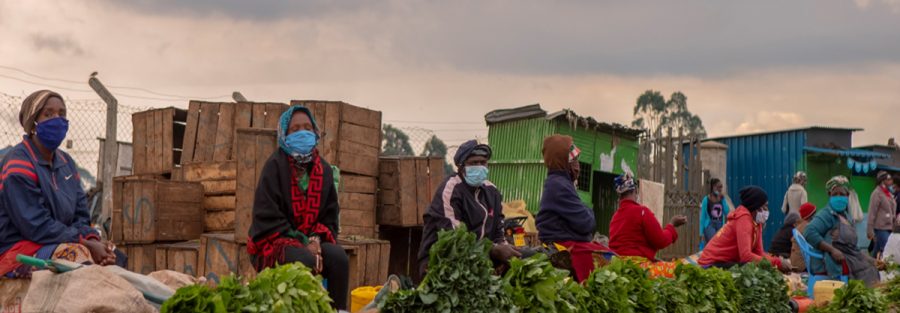Building Resilience & Sustainability
Over the years, the African economy has witnessed the remarkable transformation that has paved the way for the continent’s enormous growth and subsequently improved the standard of living of millions of people. The continent accounts for about 15% of the world’s population and is a haven to a third of Earth’s mineral reserves like Salt, Cocoa, Cement, Iron Ore, Natural Gas, Rubber, Limestone, Coal, Palm Oil, etc. Many Sub-Saharan African countries have accomplished steady economic growth averaging 6% as of 2015.
The results, which were attributed to population growth, rise in prices of natural resources, and associated resource development in inland African countries, triggered an increase in the total trade volume across the continent. Beyond the concept of the resource boom, this growth rate can be ascribed to reforms undertaken by many African countries in an effort to improve quality of governance, reduce the cost of doing business, improve basic services and expand economic opportunities which will portray Sub-Saharan Africa’s transformation as rapidly progressing. However, there are significant risks that could undermine this momentum.
As the global community faces fresh pressures such as population growth, land & ecosystem degradation, abuse of natural resources, fragility of states and complex conflicts, there is an urgent need to help Sub-Saharan African countries specifically, withstand and recover from increasing shocks and subsequently build her resilience and sustainability.
It is estimated that of 26 Sub-Saharan African countries identified as fragile — a term characterized by weak growth, political instability, poor governance, low capacity, and non-inclusive institutions—only 12 could be expected to become more resilient by 2039 (Cilliers and Sisk 2013).
According to the International Monetary Fund (IMF), fragile States generally have a combination of weak and non-inclusive institutions, poor governance, low capacity, and constraints in pursuing a common national interest. As a result, these countries typically display an elevated risk of both political instability (including civil conflict), and economic instability (through a low level of public service provision, inadequate economic management, and difficulties to absorb or respond to shocks). Crises in such countries can also have significant adverse spill-overs on other countries in the region. A vivid example is the religious insurgencies in the extreme North of Nigeria, spilling to neighboring countries like Cameroon and the Chad Republic.
One critical step to building resilience is the establishment of concrete measures by the government of any nation. Such measures are to be prioritized and decision-makers around the country can affect this vision by establishing appropriate metrics applying these metrics, and cascading these metrics down to the grassroots level. In the area of economic resilience, channeling government efforts and agency interventions to foster economic stability and development is the goal. It is grounded in diverse economies that can provide growth opportunities for employment and economic management that can adapt to changing circumstances. Formulating strategies to generating huge revenues and ROI for the region is expedient to implementing important economic and social policies and the undertaking of critical infrastructure investments. For example, embracing new models that tap into the vitality of Sub-Saharan African regions—educating and training citizens, developing small businesses as well as encouraging domestic processing—can further kick-start many African innovations, reinforcing the region’s resilience against susceptibilities.
Furthermore, adopting a multidisciplinary approach where governments focus their development fund on stimulating entrepreneurship is paramount to encouraging open creativity among citizens. Local institutions and small and medium enterprises can partner with NGOs and civil societies and governments and foreign multinationals. This partnership can birth the establishment of regional research and innovation centers to encourage budding ingenuity and ensure the sustainability of the process.
Social and political resilience reflects the maintenance of social cohesion and the ability to absorb shocks in the event of crises such as social conflict, civil unrest, and political instability. It can be built through effective enforcement of non-discrimination, the development of functional institutions, durable political settlements, and identities that cut across pre-existing lines of conflict or exclusion, including gender. Environmental resilience in Sub-Saharan Africa often involves prioritization of environmental disaster risk reduction, development of effective natural resource management to areas that are highly susceptible to these hazards, such as the Sahel.
Designing programs and meaningful partnerships between government, intervention groups, and communities in an effort to build highly capable and legitimate institutions is paramount to building national resilience and sustainability. Sub-Saharan African countries need to create the right conditions for sustainability to take place, including infrastructure, education, and the creation of larger and more competitive markets. Sustainable economies are focused on nurturing and developing opportunities in terms of natural resources development, technology, research, and discovering new ways to develop the economy without conflicting with the needs of the environment and society. By building resilience and encouraging sustainability, governments and institutions are helping to promote economic, social, and environmental wellbeing and also raising the people’s quality of life while guarding against external attacks.



